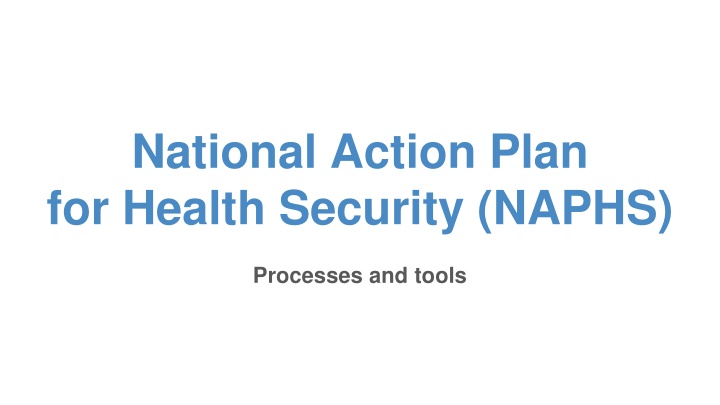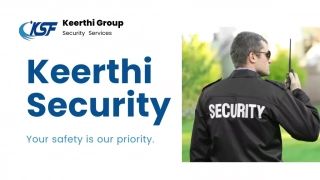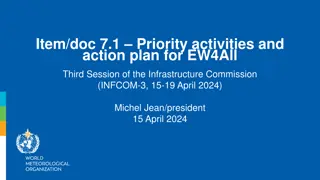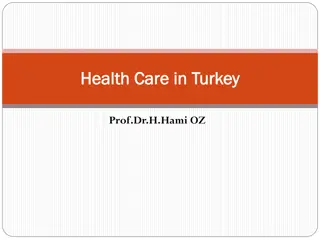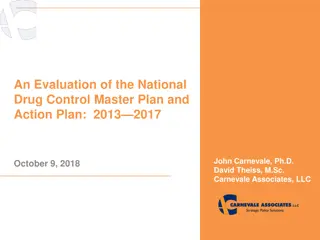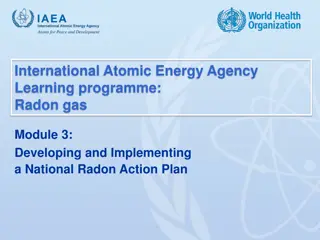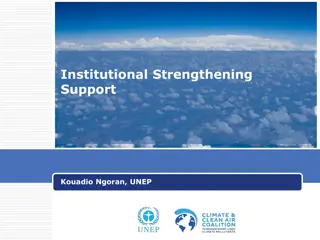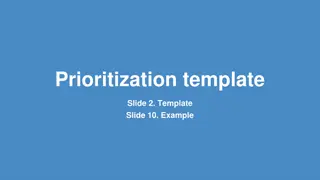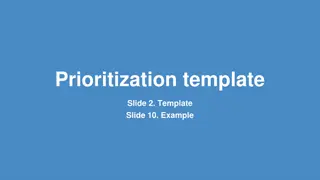National Action Plan for Health Security (NAPHS) Overview
This content provides an overview of the National Action Plan for Health Security (NAPHS) processes, tools, agenda, coordination team, global health security updates, International Health Regulations (2005), and strategic operational plan. NAPHS aims to enhance epidemic preparedness, IHR compliance, and health emergency response capabilities.
Download Presentation

Please find below an Image/Link to download the presentation.
The content on the website is provided AS IS for your information and personal use only. It may not be sold, licensed, or shared on other websites without obtaining consent from the author.If you encounter any issues during the download, it is possible that the publisher has removed the file from their server.
You are allowed to download the files provided on this website for personal or commercial use, subject to the condition that they are used lawfully. All files are the property of their respective owners.
The content on the website is provided AS IS for your information and personal use only. It may not be sold, licensed, or shared on other websites without obtaining consent from the author.
E N D
Presentation Transcript
National Action Plan for Health Security (NAPHS) Processes and tools
Agenda Welcome and opening remarks Introduction of NAPHS coordination team Overview of epidemic preparedness and IHR Overview of NAPHS and history of NAPHS in [country name] Introduction to NAPHS capacity building stages Overview of NAPHS Implementation Toolkit Overview of NAPHS process Progress update from NAPHS coordination team Epidemic preparedness and NAPHS implementation in [country name] Next Steps
NAPHS coordination team Competency Institution Representative s name and job title
Global Health Security: Outbreaks are happening all the time. The WHO Health Emergencies Program is currently monitoring 147 events in the region including: Ebola disease caused by Sudan virus in Uganda Cholera in Nigeria Monkeypox in the WHO African Region Note to NAPHS coordination team: visit this link to update this slide from WHO AFRO including a screenshot of the latest weekly bulletin and current event-monitoring information.
International Health Regulations (2005) The International Health Regulations (2005) (IHR) provide an overarching legal framework that defines countries rights and obligations in handling public health events and emergencies that have the potential to cross borders. The IHR are an instrument of international law that is legally-binding on 196 countries, including the 194 WHO Member States. The IHR grew out of the response to deadly epidemics that once overran Europe. They obligations for countries, requirement to report public health events. create rights and the including
National Action Plan for Health Security (NAPHS) Strategic NAPHS Operational plan What it is High-level goals or objectives that are achieved by the development and implementation of annual operational plan Short-term priority actions that contribute to high-level goals outlined in strategic NAPHS The NAPHS is central to maintaining and strengthening IHR (2005) capacities and progressing towards the effective prevention, detection and mitigation of health emergency threats. 10 proposals to build a safer world together Strengthening the Global Architecture for Health Emergency Preparedness, Response and Resilience. Geneva: World Health Organization; 2022. License: CC BY-NC-SA 3.0 IGO. Time horizon Multi-year (e.g., five years) Outlines key high-level goals or objectives Shorter-term (e.g., annual) Specifies target outputs and the activities needed to accomplish them Value Supports advocacy for financing from both domestic and global partners by establishing long- term funding needs Generates high-level buy-in Helps to maintain long-term multisectoral alignment by serving as a strategic road map Designates responsibility and funding for detailed activities that can be tracked for progress and accountability Fosters multisectoral coordination by facilitating clear and specific activities derived from the strategic plan and/or more timely assessments (e.g., AARs, IARs, and SPAR) and risk- based priorities (e.g., STAR, VRAM)
NAPHS in the Region In AFRO, there has been extensive uptake of IHR Monitoring and Evaluation Framework (IHR MEF) approaches and the NAPHS process. 47 Member States have conducted a Joint External Evaluation (JEE), while 39 Member States have completed a NAPHS.
NAPHS in [country name] Instructions to NAPHS coordination team: Provide 4-6 bullet points capturing the history and status of NAPHS. Suggestions for key information to include are in the notes section below.
How do we ease, simplify and accelerate country-level preparedness?
An overview of the NAPHS process
The NAPHS process requires three key groups of stakeholders who each play unique roles: NAPHS TECHNICAL LEADS HIGH-LEVEL DECISION MAKERS Consulted to ensure buy-in and ownership of the process COORDINATION TEAM Oversees and coordinates the NAPHS process and collaboration across relevant sectors and technical areas Comprised of operational technical leads (focal points) from each technical area and supports the NAPHS coordination team by providing technical and operational inputs First, the NAPHS coordination team: Established NAPHS coordination team Conducted stakeholder mapping exercise Conducted a desk review of all recent and relevant IHR MEF approaches and assessments Conducted a SWOT analysis Then, the NAPHS coordination team and technical leads: Reviewed the current operational plan or generated a draft operational plan via the Benchmarks digital tool Prioritized activities using outcomes and recommendations from IHR MEF approaches and other assessments Conducted a Functional Group exercise to ensure the plan is efficiently executed Now, the NAPHS coordination team, technical leads and high-level decision makers: Aim to align on a shared vision for health security Aim to gain final consensus and approval for the operational plan
Health Security in [country name]
[country names] current health security context SWOT Analysis Strengths (Internal) Summary strengths Weaknesses or Challenges (Internal) Summary weaknesses or challenges Opportunities (Internal and External) Summary opportunities Threats (Internal and External) Summary threats
